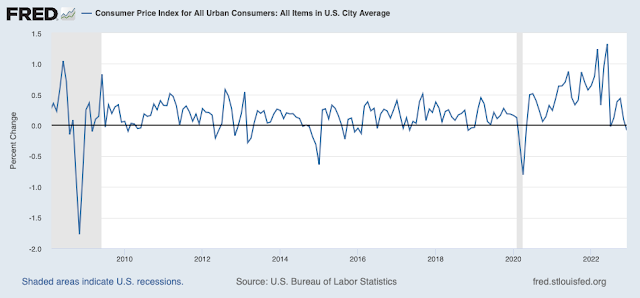What's the matter with a temporary delay in paying interest and principal on debt, if the debt limit hits? Collateral. Financial institutions can easily borrow using treasury securities as collateral. If a treasury is in technical default, it suddenly can't be used as collateral, or you can borrow much less money with it. Thus even a technical and temporary default, even if we all know Uncle Sam will eventually repay the debt, is dangerous to the financial system. (Why we have so much short term collateralized borrowing is a topic for another day. We do, and unwinding it suddenly would be bad.)
Earlier I argued that the Treasury should stand up and say "we will pay interest and principal on Treasury debt before we pay anything else." It's important to say that now to avoid a run. I suspect they will do it in the end, but want to use the threat of a crisis to get Congress to raise the limit promptly. If so, they're playing with fire, as runs start ahead of time.
Today, however, I've been thinking about what the Fed can do. First, the Fed can say right now, in the event of a debt ceiling technical default, we will suspend all our rules and allow financial institutions to lend against treasury collateral with customary (tiny) haircuts, ignoring the technical default. Second, the Fed can say it will lend freely against treasury collateral to banks, or via reverse repos to financial institutions, with no haircut, even if the securities are in default. Third, the Fed can say it will buy Treasurys. It will fix a low rate of interest and buy all anyone wants to sell at that price. Will private markets make some money off this? Yes. Fine. That's the point. Hang on to your treasurys, you'll make some money is a lot better than starting a crisis. If the Fed overpays, it just remits less to Treasury eventually.
Say it now, so there is no run as the debt ceiling approaches.
The one thing Fed and Treasury will clearly not be able to do under a debt limit is to run another big bailout. So make darn sure we don't need one!
What about the trillion dollar coin? Clever, but as before, issuing interest-only debt is even more clever. The debt limit only counts principal, not market value, so interest only debt doesn't count! But both that and the trillion dollar coin are so obviously against the spirit of the debt limit, that if Treasury is worried about its authority to prioritize treasury debt over (say) electric car subsidies, then either is not worth discussing.
Updates:
Chris Russo wrote in Barrons Sept 2021 reporting on internal Fed strategizing for this event.
The Fed will treat defaulted Treasury obligations the same as non defaulted obligations. Their regulatory treatment will remain the same including capital requirements and risk weights. Moreover these securities "will not be adversely classified or criticized by examiners."
Policy makers would "presumably want to avoid the impression that the Federal Reserve was effectively financing government spending."
The Fed will
transact with defaulted securities at market prices
Eventually
The Fed could move the defaulted securities on to its balance sheet [English translation: buy] ...this set of options is the most contentious. Powell described them as "loathsome"... the institutional risk would be huge. The economics of it are right but you'd be stepping in to his difficult political world and looking like you are making the problem go away. Lacker called it "beyond the pale." John Williams... supported keeping those options on the table. ...no Fed governor categorically rejected the third option.
As I read it, this is considerably less than what I described. The Fed worries here about not inadvertently forcing individual banks to treat treasury assets as defaulted securities, which is good. But the main issue is whether financial markets, many not banks, will accept treasury collateral for lending, or whether we have as in 2008 a grand unwinding of the chain of short-term financing due to lack of collateral. Only the "loathsome" option addresses that issue as far as I can see. And if you want to stem a collateral run, it's best to clarify ahead of time.
I am confused about your proposal. Fed is part of the government. With currency in circulation not (?) counting against the debt limit aren't you suggesting the Treasury debt be (contingently) replaced with currency? Or would the Fed be defaulting on whatever asset it lends out?
Boy, if I didn't explain it well enough for Casey, I must really need a remedial writing course. Answer/clarification:
Sorry if not clear. Fed can buy / lend against existing treasury debt, in default, and offer cash/reserves in exchange. This solves the financial crisis issue. It does not allow the treasury to borrow more, or the Fed to finance deficits.




